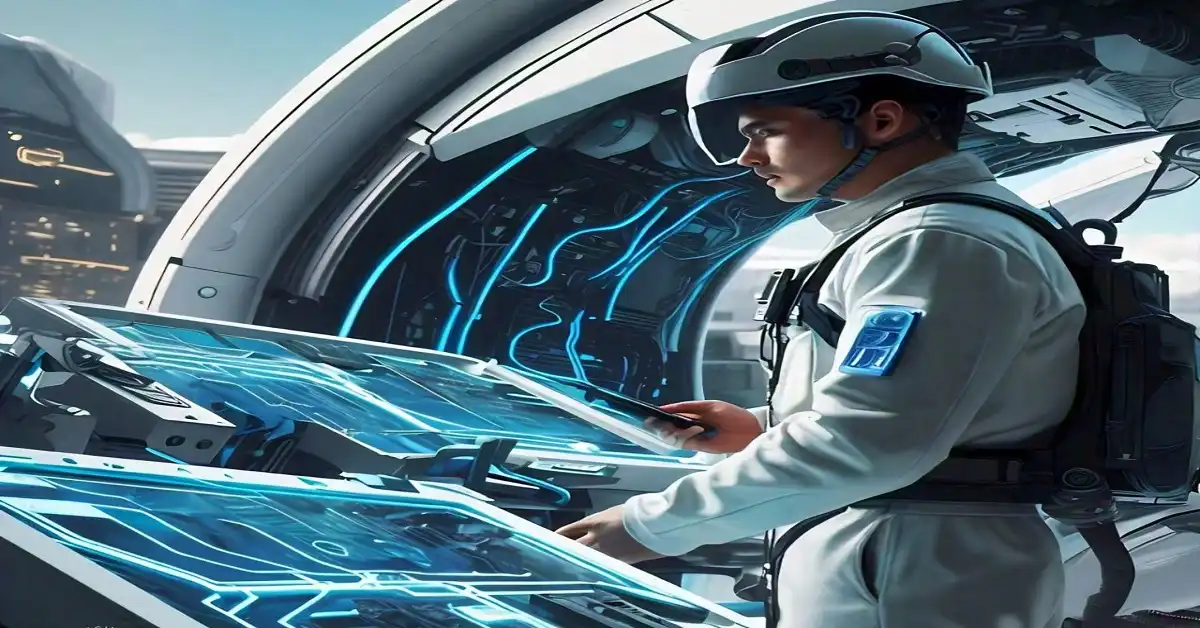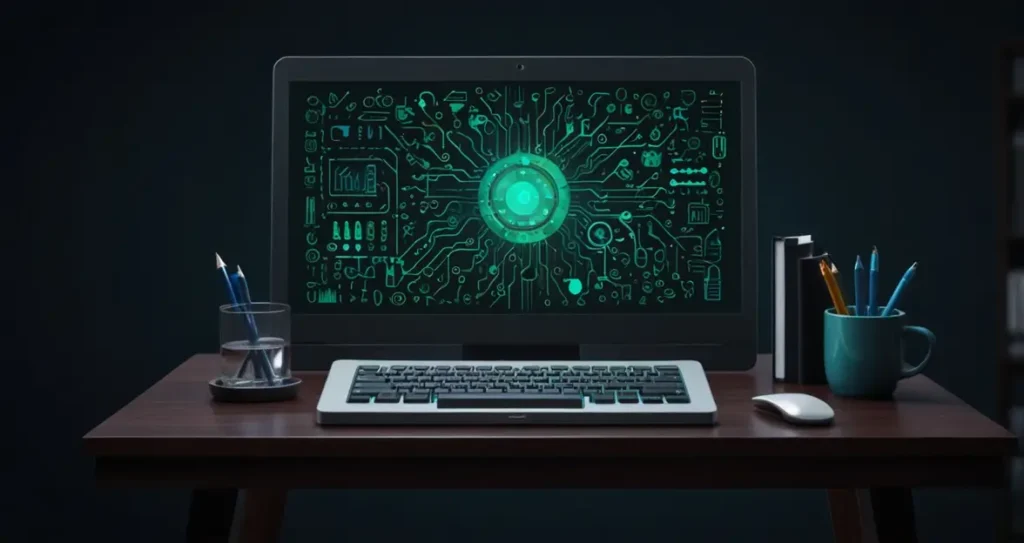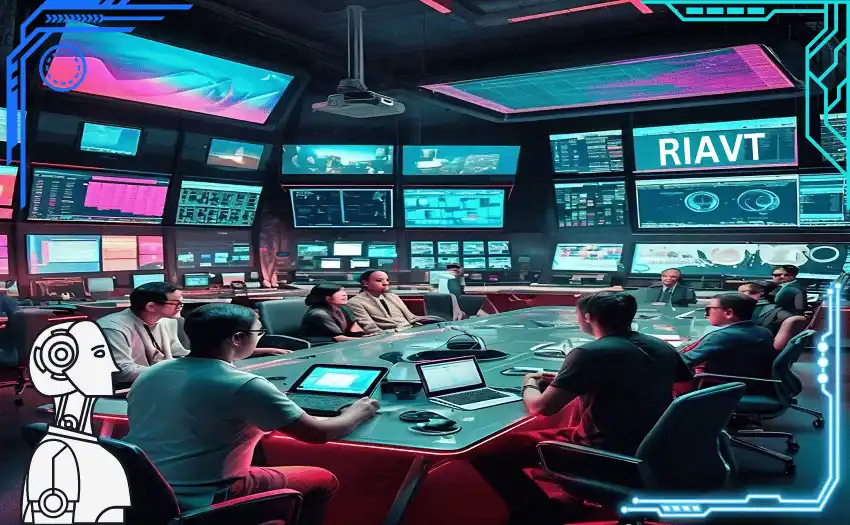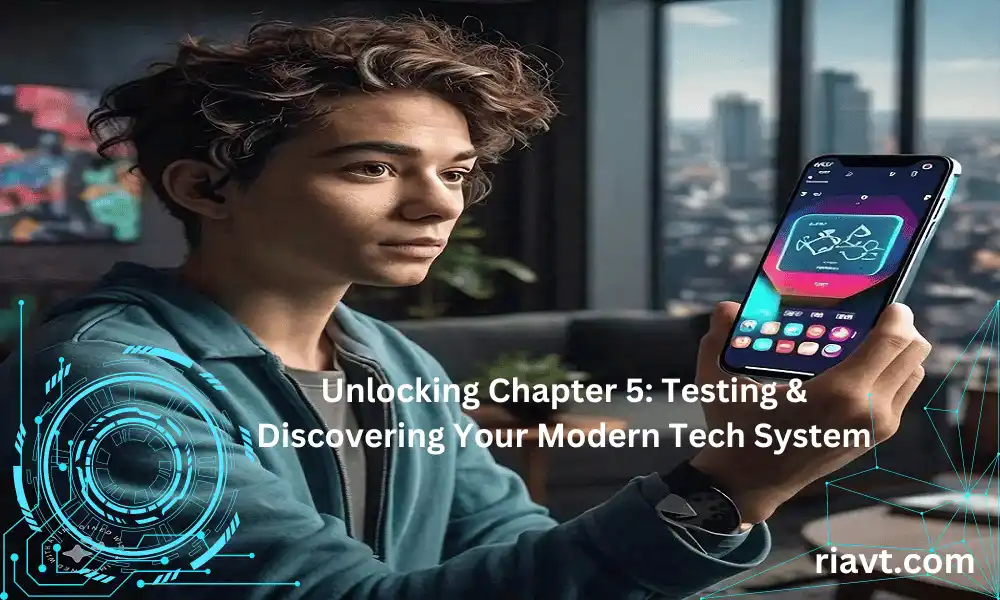Introduction
In a time when technology is in every part of our lives, learning how to use it well is both a goal and a necessity. We have learned more about things and come up with some new ideas.
Now we are ready to start Chapter 3 of our journey through technology. Let us begin the journey to discover how this technology complex works.
Setting the Scene: the Tech-Nology that Forms Our Lives
Technology — once a mere tool — is becoming the very tissue of our being. Thanks to technology, many aspects of our lives are changing three or four times a year now.
For instance, when we wake up in the morning and the soft light from a screen filters through our windows it is a complex algorithm that produces it. Beyond this is there? Can we guide this omnipotent force to our own end?
The Quest for Mastery: What Does It Mean to Master Technology?
Not skillful or studied code snippets or pass any exams, Expertise is. rather, it is about leaving the world behind, with no regrets of front anything undone. It means tapping into the roots of creation,and making life senseless all at once.
For anyone who knows how to use it, technology can be a digital magician that casts spells of logic and creativity.
Taking the Chapter 4 First Step towards understanding the basics, you’ll know the bits and bytes of music and be able to put them together in a way that works well.
Understanding the Advanced Technological System
Deconstructing Complexity: Layers and Components
There are many different levels of hardware, software, and standards that make up a tech system. If you peel back the layers, you’ll see that the silicon vias are resonating with electrical potential.
This is where microcontrollers, GPUs, and quantum gates come in. They are the basic composition of the digital world.
The Interplay of Hardware and Software
Hardware and software go hand in hand. CPU process commands, RAM memory saves, and GPU image rendering mode can create a true–looking image in the world.
Meanwhile, software — lines of neat code — tells all these different parts what to do. It is a ballet between electrons and computers, where speed and grace are indivisible.
Navigating Algorithms and Data Structures
Algorithms are the computer’s architect enabling them to sort, find things, and run at a faster optimization speed.Data structures arrays and lists provide the framework so that more complex data can be built off of these simpler types.
Picture yourself walking around amid an area where all the roads are linked lists or trying to balance a binary tree. Each decision you make resonates through out the entire process there altering behavior.
The Building Blocks of Mastery
Deep Learning: Unlocking Neural Networks
Neural networks are simulating the linkage pattern of human brain. Hidden layers recognize features from data and adjust their weights to minimize errors by learning the task.
The most important information is extracted through a process of attention. Neural layers show what a face looks like, and recurrent layers write music. AI is about deep learning, which is the ability to teach these networks new things.
Quantum Computing: Beyond the Binary
Classical logic does not work with quantum bits (qubits). They are in a state of “superposition”, and they only come into apparent states when they are measured.
Quantum gates perform a careful ballet by binding qubits and sending data elsewhere. When we use this quantum dance, we can gain exponentially more computing power.
Edge Computing: Power at the Fringe
Small powerhouses called edge devices handle data closer to where it’s stored. They see data from sensors, understand words, and make sure traffic flows smoothly.
Edge computing reduces latency, which means choices can be made in real time. Think of a car that can cross the road without waiting for the computer to finish elsewhere.
Mastering the art of coding
From Syntax to Elegance: Writing Clean Code
Code is not just syntax; this is poetry. Allusions are important, variable names resonate, and comments tell the story.
Clean code reads like a sonnet—concise, expressive, and free of redundancy. It’s the difference between a tangled forest and a well-pruned bonsai.
Debugging Techniques: Teaming Up the Gremlins
Bugs—those feisty gremlins—annoy every coder. We set breakpoints, inspect variables, and follow the stack trace.
Debugging is a detective’s work, unraveling the mystery of null pointers and troubleshooting errors one by one. The thrill is in finding that flaw, like finding hidden treasure.
Version Control: Git and Collaboration
Time traveler Git is a powerful tool that only goes forward. Allowing you to branch, merge and rewind. Promises are our hallmark, pulling us back from chaos.
Developers also continue to work together as they haul everything out of domain-specific tools and into Git. Git isn’t only about code. Underneath it all lies a chorus of collaboration.
Understanding The Most Advanced Tech
Augmented Reality : Reality It’s Digital ME
AR is a body of digital strategy that flows through our world, Pokémon haha at our feet, or medical operations sliding off the monitor and into real life before our eyes. Yes — experience meets canvas in what people call AR, a space where our imagination meets reality. We can make out a painting in photons.
Blockchain: trust in the digital age
Blockchain, a decentralized ledger, anchors trust. Cryptocurrency rides its own waves, but its potential extends beyond finance. Keep clear supply lines, immutable votes, and coded digital art fresh in mind.
Bioinformatics: Cracking The Genetic Code
The message of life is concealment; however, bioinformatics brings it to light. We align genomes, anticipate protein structures and understand the evolutionary trees behind every branch on a tree-This is an effort to crack life’s source code itself.
Ethics and Responsibility in Tech Mastery
Behind every AI model there is a certain chain of data–data that bears witness to our prejudiced ideas. When we teach it people, have it calculate stock prices or even recommend movies, we inform the machine less about our social faults.
Prejudice increases, perpetuates stereotypes, and reinforces inequality. If we want to learn something, be very careful.
We need to check our models, use different types of training data, and ask ourselves what we think we know. Only then can we create AI that serves everyone, not just a privileged few.
Privacy Concerns: Balancing Convenience and Security
For ease of use in search of amazing tech, we’ve given up our privacy. A digital picture of our lives is built from the things we like to do, the smart speakers we listen to, and location data.
You need to find the perfect balance between using data to spark new ideas and giving people time to learn on their own. Encryption, anonymity, and informed consent became our tools of choice.
Sustainable Tech: Green Innovations
Now in the age of digital everything needs energy to operate. A data center hums with electricity, and our devices consume electricity around the clock constantly not by day or night If expertise and quality can make such big impacts on data center management, what more when applied to the carbon footprints of technology?
A renewable energy source, better algorithms, more efficient design principles of production that take into consideration how materials are used can all lead us onward.
As stewards of technology, we must weave sustainability into our digital tapestry.
Beyond the Screen: Physical Interfaces
Haptic Feedback: Touching the Virtual
Imagine being able to feel the impact of digital clothes or guns. When you feel something, you can associate it with your mind.
Our fingers can tell what the virtual world is trying to say by how they feel, what they click, and how they vibrate. Mastery comes from creating moments that transcend images and make the intangible real.
Brain Computer Interface: The Mind Over Machine
The mind—a universe within—desires to communicate directly with machines. BCIs let us use our thoughts to move limbs, type, and experience virtual worlds.
They do this by receiving information from our brain. The skill here is like telepathy: You have to be able to hear the mind’s whispers and turn them into commands. BCIs herald a future where our minds seamlessly integrate with silicon.
Wearable tech: Fashion meets functionality.
These days, wristwatches do more than just tell the time. They also track our heart rate and sleep and encourage us to adopt better habits.
Wearable tech connects to our bodies and combines style with function. You have to make things that work with our lives, like little friends that are nice to us and don’t get in the way.
From smart rings to augmented reality glasses, our wrists and temples will bear the technology future.
Adapting to Technological Challenges
Scalability: Stepping Up to the Next Level
When it comes to success it is difficult to quantify. When our app first came out, it was a tranquil place on the Internet. Today, it has vast numbers of users.
Databases freeze, servers become overloaded, and lags occur. Expertise comes from building systems that can grow without problems.
Music draws power from distributed computing, balanced loading and auto-scaling. Our code goes as fast as the tightrope dancer, and we are growing rapidly in our dance.
Cybersecurity: Building Digital Fortresses
Hackers wait in the dark to find chinks our digital defenses. They exploit bugs to corrupt data or steal information, and ultimately stop service from working together.
Expertise lies not just in defense and encryption, but. It is a way of thinking. We spot risks, fill in holes, and tell people how to stay safe. Cybersecurity is our castle moat, and we stand guard with our swords drawn.
Legacy Systems: Decommissioning the Old and the New
Ancient codebases, like dusty manuscripts, wait to be deciphered. legacy systems with forgotten languages, obsolete libraries, and arcane business rules.
Mastery involves unraveling these puzzles. We do reactors, migrations, and documentation. We honor the past while embracing the future. Legacy is not a burden; it is a bridge over time
The Human Element: Soft Skills for Mastery
Communication: Translating Geek to Human
Code speaks in cryptic languages, but users want clarity. The skill lies in bridging this linguistic divide.
The papers we write make you sing, the error messages we send make you feel, and the emails we send make you want to do something.
Communication is not an afterthought. It’s the mortar that holds our digital buildings together.
Adaptation: Riding the Waves of Change
The rate of technological change is fast. Languages evolve, frameworks spring forth, paradigms vanish. Expertise is not the ability to cling to what is familiar; it’s the process of surfing waves albeit ignorantly in front.
We learn, and learn, and learn again. Adaptation is our secret weapon-it helps us traverse the changing maze all the time.
Empathy: Designing for users, not just users’ needs
Beyond the lines of code, actual users give birth to our creations. Empathy is the nourishment of excellence. We put ourselves in their shoes, share hardships with them and design software that meets people’s needs. Access, inclusion, user-centered design-these became our mottoes.
[Conclusion
The Never-Ending Journey: Why Mastery Is a Process
Expertise is not a destination, so it should not exist as strip of land; it is a long and winding road. Each path is a learning maze, yet each twist and turn presents a whole new chance for progress.
You have to follow this road with all your mind, will, and your constant hunger for knowledge. Living in a world of power means you never feel safe, and you’re always striving to be the best.
Inspiring the Next Generation: Passing the Torch
It is important to remember that our history is more than what we do. And it’s how we affect the generations ahead of us. The young people’s interest in this is what really counts, because with their support we make it.
They also have to understand this truth and be able to freely share our knowledge. In doing so, we guarantee that the talent of a present company improves as well as forever pursues great.
Should you master something well, then life past, present and future slip like a thread into a larger fabric. How weillerous the human spirit is, how flexible it can also grow and change.
We must realize that the journey, not the destination, is key to success. A journey is the mode of traveling from one place to another, but it is also an ending in its own right.
Mastery is a journey, not the final destination. We can then make it thoroughte all manner of things.
We believe that any event, any suffering, any achievement can turn into a prompt for learning, growing, and changing.
It is this way of thinking that will help us to go forward, to push at boundaries of what mankind can do. And we must carry on teaching others which then leads them into teaching others.

Ava Rivers is a creative storyteller and novelist known for her captivating and imaginative tales. With a passion for writing that spans many years, Ava has finally decided to share her work with the world. Her debut novel, “Getting A Technology System In Modern Day“, is a testament to her skill and dedication to her craft. When not writing, Ava enjoys reading, learning, and exploring new ideas. She hopes to inspire and transport her readers to new worlds through her stories.



